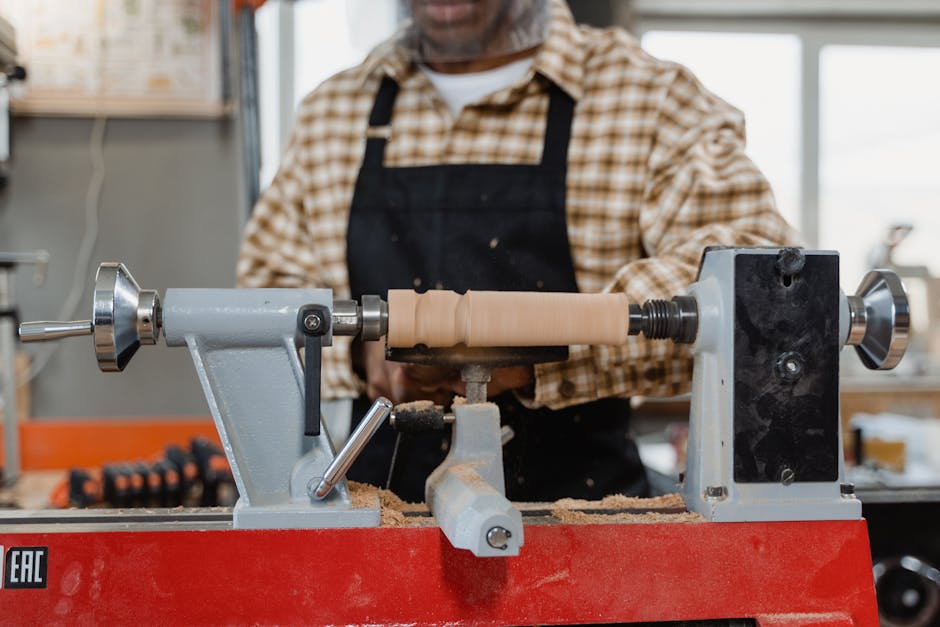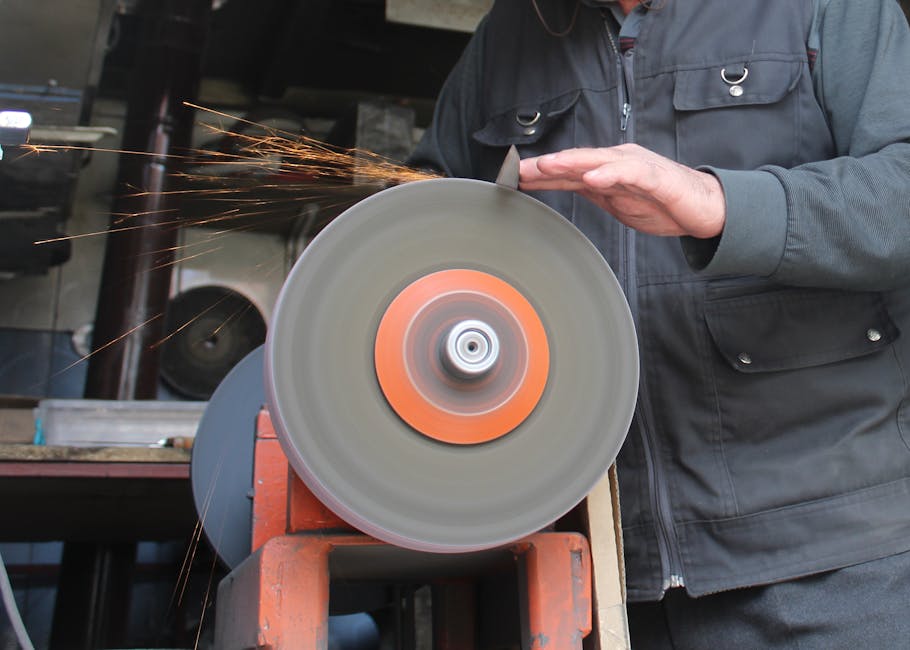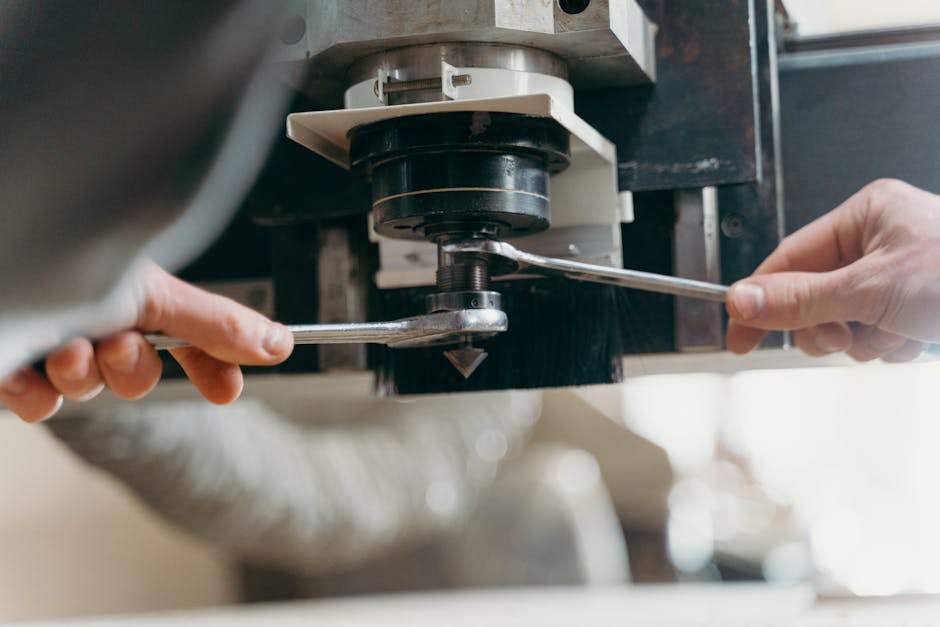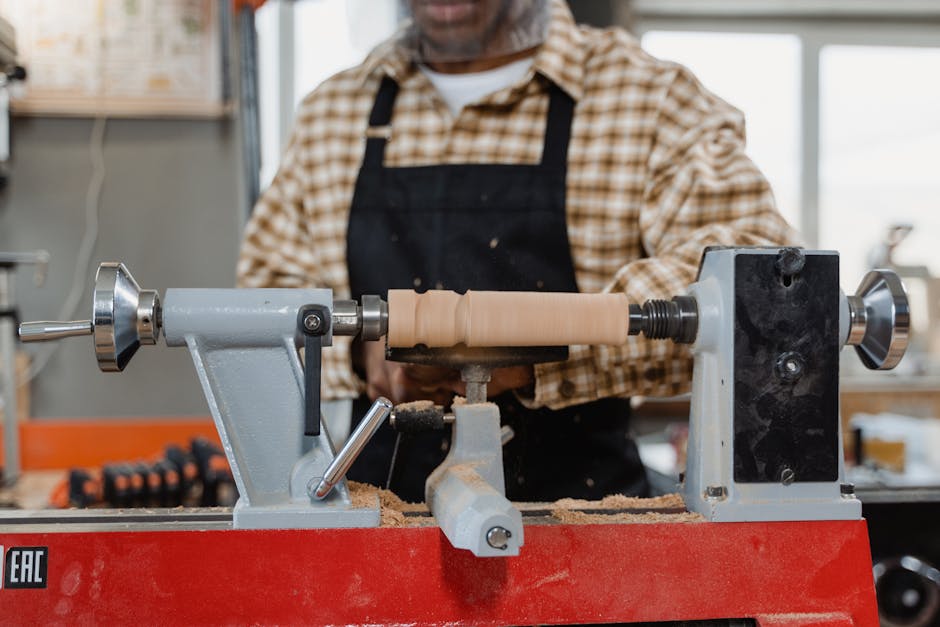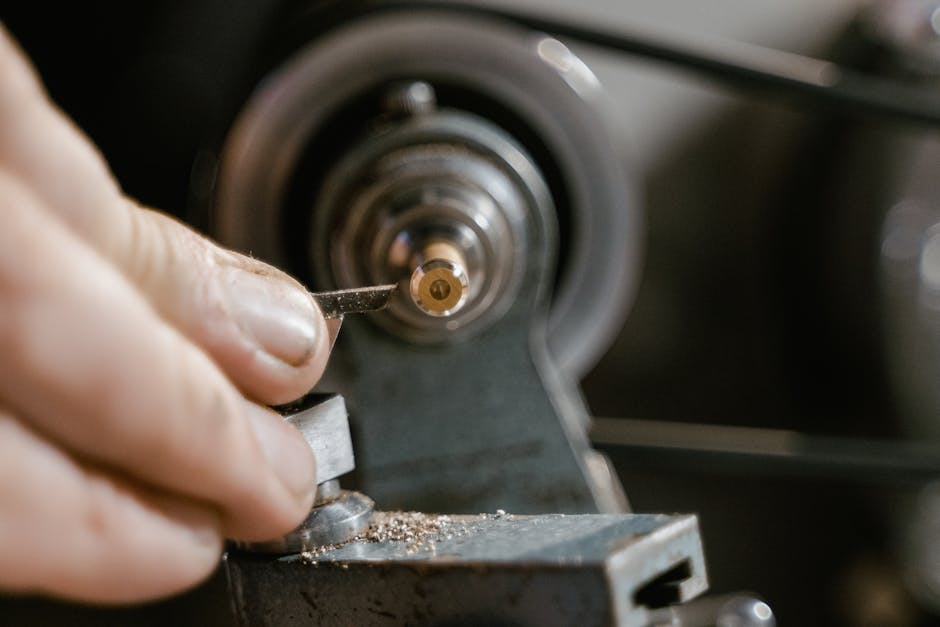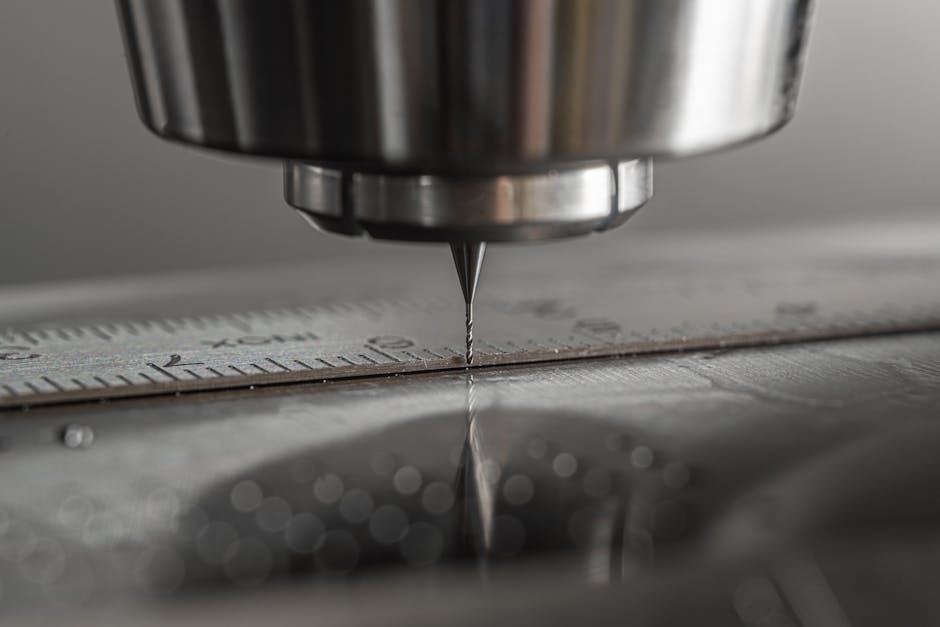A CNC service technician plays a vital role in ensuring the smooth operation and precision of CNC machinery. If you’re curious about what these experts do, here’s a quick breakdown:
- Maintaining and repairing CNC machines to keep them running efficiently.
- Diagnosing and troubleshooting issues to minimize downtime.
- Ensuring precision in the production of components.
We’ll give you a glimpse into a typical day in the life of a CNC service technician.
The core responsibilities of a CNC service technician revolve around maintaining, repairing, and optimizing complex CNC machinery. These machines are integral to the manufacturing of precision components used in various industries, including aerospace, medical, and automotive.
The CNC process is all about transforming raw materials into precise, custom parts. This is achieved through advanced computer programming and machinery, such as CNC lathes and milling machines. A CNC service technician ensures that these machines operate flawlessly, delivering high-quality results every time.

The Role of a CNC Service Technician
A CNC service technician plays a crucial role in keeping the manufacturing world running smoothly. Their job involves a mix of technical skills, problem-solving, and hands-on work. Let’s dive into what this role entails.
Programming and Machining
At the heart of a CNC service technician’s work is programming and machining. These professionals must understand how to program CNC machines using specialized software. This includes writing and debugging code that tells the machine how to cut, shape, and finish materials.
CNC programming is a precise task. Technicians must ensure that every line of code is correct to avoid costly errors. They often use CAD/CAM software to design and simulate parts before actual production, ensuring everything runs smoothly.
Aerospace and Medical Equipment
CNC service technicians frequently work in industries that demand high precision, such as aerospace and medical equipment manufacturing. These fields require parts that meet exact specifications and can withstand extreme conditions.
For example, in the aerospace industry, machinists create intricate components for aircraft and spacecraft. These parts must be robust and precise to ensure safety and performance. According to TMC Technologies, aerospace machinists are pivotal in shaping the future of space travel and aviation.
In the medical field, CNC machines produce components for devices like surgical instruments and implants. Precision is critical here, as even a tiny error can have significant consequences on patient health. CNC service technicians ensure that machines produce flawless parts for these life-saving devices.
Daily Tasks
A typical day for a CNC service technician might include:
- Programming CNC machines to create specific parts.
- Operating and monitoring machines during production runs.
- Diagnosing and repairing faults in machinery to minimize downtime.
- Performing preventative maintenance to keep machines in top condition.
- Collaborating with engineers and machinists to improve processes and solve problems.
Real-World Example
Consider the role of a CNC Field Service Technician in Gainesville, GA, with Morris South. This position involves working with both electrical and mechanical components of CNC machines. Technicians perform preventative maintenance, provide technical support, and train operators to ensure the smooth operation of complex machinery.
In the next section, we will explore the daily responsibilities of a CNC service technician, including the use of blueprints, CAD/CAM software, and machine operation. Stay tuned to learn more about what a day in the life of a CNC service technician looks like.
Daily Responsibilities
A CNC service technician’s day is filled with a variety of tasks that ensure CNC machines run smoothly and efficiently. Let’s break down some key daily responsibilities:
Reading Blueprints and CAD/CAM Files
Before any work begins, a CNC service technician needs to understand the design specifications. This involves reading blueprints or CAD/CAM files. These documents provide detailed instructions on dimensions, tolerances, and the sequence of operations.
“A typical day in the life of a CNC operator can vary, but some common tasks include reading blueprints or CAD/CAM files…”
Machine Operation
Operating the CNC machine is a core part of the role. This includes setting up the machine, loading materials, and initiating the machining process. Technicians must monitor the machine’s feed and speed to ensure it shapes parts accurately.

Tool Selection
Choosing the right tools for the job is crucial. Different materials require specific cutting tools. For example, metals and plastics behave differently under the cutter, and selecting the wrong tool can result in defects or machine damage.
“They need an intimate understanding of the materials they are working with – different metals and plastics behave differently under the cutter…” source
Precise Measurements
Precision is key in CNC machining. Technicians must take accurate measurements to ensure parts meet the required specifications. This involves using micrometers, calipers, and other measuring tools to check the dimensions of the finished product.
Adjustments and Troubleshooting
Throughout the day, technicians may need to adjust cutting tools and workpieces to correct any deviations from the blueprint specifications. They must also troubleshoot any issues that arise, such as machine malfunctions or unexpected material behavior.
“Precision is key when working with CNC machines. Pay close attention to detail and ensure that your measurements and cuts are accurate.”
In the next section, we’ll look at the challenges and solutions faced by CNC service technicians, including fault diagnosis, repairs, and maintaining customer relationships.
Challenges and Solutions
Fault Diagnosis
A challenge for a CNC service technician is diagnosing faults. Machines can break down for various reasons, from software glitches to mechanical failures. Identifying the root cause is crucial.
Solution: Develop a systematic approach to troubleshooting. Start with the simplest checks, like verifying power supply and connections, and then move to more complex diagnostics. Using advanced diagnostic tools can also speed up the process.
“Regular maintenance checks by qualified technicians can prevent many issues before they escalate.”
Repairs
Once a fault is diagnosed, the next step is repairs. This can involve replacing worn-out parts, recalibrating the machine, or updating software. The goal is to get the machine running smoothly again as quickly as possible.
Solution: Keep a well-stocked inventory of common replacement parts and tools. Training in both mechanical and electrical repairs is essential. Having a strong background in electronics can be particularly beneficial, as noted by industry experts.
Customer Relationships
A CNC service technician often works directly with customers. Building and maintaining good relationships is key to long-term success. Customers rely on technicians not just for repairs, but for advice and support.
Solution: Communicate clearly and professionally. Explain what went wrong, how it will be fixed, and what steps can be taken to prevent future issues. Exceptional customer support can enhance the overall service experience.
Health and Safety Compliance
Working with CNC machines involves various hazards, from sharp tools to electrical components. Ensuring health and safety compliance is non-negotiable.
Solution: Follow strict safety protocols. Wear appropriate personal protective equipment (PPE) and ensure that all safety guards and emergency stop buttons are functional. Regular training on safety procedures is also vital.
“Addressing common issues with industrial machines requires a proactive approach, involving regular maintenance, professional expertise, and custom solutions.”
In the next section, we’ll explore the skills and qualifications necessary for a CNC service technician, including machine tool technology and teamwork.
Skills and Qualifications
Machine Tool Technology
A CNC service technician must be well-versed in machine tool technology. This includes understanding how various CNC machines operate, from lathes to mills. Recognizing how different materials like metals and plastics behave under the cutter is crucial. For instance, TMC Technologies emphasizes the importance of skilled machinists who can deliver high-quality, precise components across various industries.
Math Skills
Math skills are indispensable. Technicians often need to calculate feeds and speeds to ensure precision. Basic arithmetic, algebra, and geometry are used daily. Accurate measurements and adjustments are critical for shaping machine parts to exact specifications.
Computer Skills
Computer skills are equally important. Technicians use CAD/CAM software to read blueprints and design files. Familiarity with CNC programming helps in troubleshooting and maintaining machines. The ability to update and manage software ensures that the machines run efficiently.
Manual Labor
Working as a CNC service technician involves significant manual labor. Setting up machines, adjusting cutting tools, and performing repairs require physical effort. Technicians must be comfortable handling tools and machinery, often in demanding environments.
Teamwork
Lastly, teamwork is essential. Technicians frequently collaborate with engineers, machinists, and other team members. Effective communication ensures that everyone is on the same page, especially when diagnosing faults or performing repairs. Learning from experienced colleagues and sharing knowledge can significantly enhance the team’s overall performance.
In the next section, we’ll look at a real-world example of a CNC Field Service Technician in Gainesville, GA, and how they apply these skills in their daily work.
A Real-World Example: CNC Field Service Technician – Gainesville, GA
Being a CNC Field Service Technician at Morris South in Gainesville, GA, offers a unique blend of challenges and opportunities. Let’s dive into what a typical day might look like for someone in this role.
Electrical and Mechanical Components
A significant part of the job involves working with both electrical and mechanical components. Technicians often find themselves troubleshooting issues that require a deep understanding of these systems. Whether it’s diagnosing a faulty servo motor or replacing worn-out bearings, the ability to switch between electrical and mechanical tasks is crucial.
“I had A LOT thrown at me very quickly to get me up to speed,” says a technician from a similar field. This underscores the need for versatility and quick learning on the job.
Preventative Maintenance
Preventative maintenance is a key aspect of the role. By regularly inspecting machines and performing routine maintenance tasks, technicians can prevent costly breakdowns and ensure smooth operations. This proactive approach not only extends the lifespan of the machinery but also saves the company time and money.
Technical Support
Providing technical support is another essential duty. Technicians often assist customers by offering solutions to complex problems, either on-site or remotely. This requires excellent problem-solving skills and the ability to explain technical details in simple terms.
One technician mentioned on Reddit that the travel aspect of the job can be both rewarding and challenging: “I travel five days a week. It can wear on you after a while especially if you’re flying a lot.”
Training
At Morris South, training is an ongoing process. New hires often undergo rigorous training to get up to speed with the latest technologies and techniques. This continuous learning environment ensures that technicians are always prepared to tackle new challenges.
“Read up on the basics to get a good foundation before you set foot in a shop,” advises a seasoned technician. This highlights the importance of preparation and continuous learning in this field.
In the next section, we’ll address some frequently asked questions about CNC service technicians, providing more insights into this fascinating career.
Frequently Asked Questions about CNC Service Technicians
What is a CNC service technician?
A CNC service technician is a skilled professional who maintains and repairs CNC (Computer Numerical Control) machines. These machines are used in manufacturing to create precision parts for various industries like aerospace, automotive, and medical equipment. The technician ensures that the machines run smoothly and efficiently, minimizing downtime and maximizing productivity.
What does a CNC service engineer do?
A CNC service engineer performs a variety of tasks, including:
- Diagnosing and repairing faults: Identifying and fixing issues with CNC machines.
- Preventative maintenance: Regularly inspecting machines to prevent future problems.
- Technical support: Assisting operators with machine setup and troubleshooting.
- Training: Educating machine operators on best practices and safety procedures.
- Upgrading software: Ensuring that the CNC machines have the latest software updates.
What is CNC service work?
CNC service work involves maintaining and repairing CNC machines to ensure they operate efficiently. This includes:
- Reading blueprints and CAD/CAM files: Understanding the design specifications.
- Setting up and operating machines: Ensuring machines are correctly configured.
- Adjusting cutting tools and workpieces: Making precise adjustments to meet specifications.
- Monitoring machine performance: Keeping an eye on feed rates and speeds.
- Testing finished products: Checking for defects and ensuring quality.
By performing these tasks, CNC service technicians help keep manufacturing processes running smoothly and efficiently, ultimately contributing to the production of high-quality, precision components.
In the next section, we’ll discuss the unique services offered by TMC Technologies and how they can help your business thrive.
Conclusion
Choosing the right CNC service provider is crucial for the success of your manufacturing projects. At TMC Technologies, we understand the importance of precision, efficiency, and reliability in CNC machining. Our comprehensive services and expert team are dedicated to meeting your specific needs and ensuring the highest quality outcomes.
Why Choose TMC Technologies?
Experience and Expertise: With years of experience in the industry, we have honed our skills and knowledge to provide top-notch CNC services. Our team is well-versed in handling complex projects across various sectors, including aerospace and medical equipment.
Advanced Machinery and Technology: We use state-of-the-art CNC machines and modern CAM systems to achieve high precision and consistency in all our projects. This ensures that every component we produce meets the strictest quality standards.
Comprehensive Service Offering: From design and programming to quality assurance and post-processing, we offer a full range of services to streamline your production process and enhance efficiency.
Commitment to Quality: We adhere to the highest industry standards and employ robust quality control measures to ensure the accuracy and quality of our machined parts. Our goal is to exceed your expectations on every project.
Exceptional Customer Support: Our team is always ready to assist you with any questions or concerns. We also offer value-added services such as design optimization and material selection advice to help you get the most out of your CNC machining projects.
For more information on our services and capabilities, visit our Capabilities Overview page.
Thank you for considering TMC Technologies for your CNC machining needs. We look forward to partnering with you and helping you achieve your manufacturing goals.


